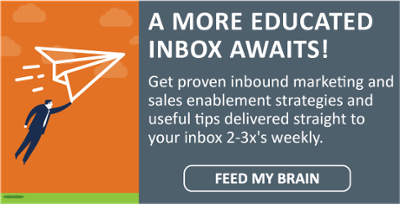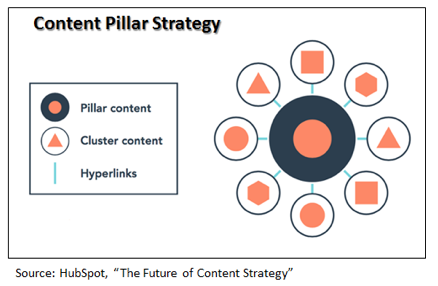Just How Smart is Your Website?
A few weeks ago we attended Inbound 2013 - the annual HubSpot sponsored conference on all things related to inbound marketing. Over 5,000 people came to Boston to hear about new cutting edge strategies and technologies for inbound marketing, and I’ve got to tell you, we were thoroughly impressed by what we saw and experienced.
One of the things that generated a lot of buzz was the launch of HubSpot’s new “Content Optimization System”. Basically, this is new website design technology that gives marketers the ability to personalize websites for making your firm’s marketing more relevant than ever before. If you’ve ever shopped on Amazon, or if you’re a member of Netflix, then you’ve already experienced this – based upon your previous interactions (and those of others with similar interests), you’re seeing content and suggestions based upon your preferences.
In other words, the Amazon or Netflix website you see is different from mine, because your preferences are likely to be different.

More sophistication, more complexities, more movement away from traditional “interruption based” marketing and making marketing more relevant is the new order of the day. But we wondered, “How does this apply to CPA, consulting and other professional services firms, and are they ready for a smart website design?”
The End of the One-Size-Fits-All Website
CPA, consulting and other professional service firm marketers have always been challenged by making their content and marketing messages relevant, especially when it comes to their websites. What we typically see is a one size fits all website that has little or no relationship to the visitor’s key interests or to their stage in the buying cycle. In other words, the website serves up the same content/information whether the visitor is a stranger, a lead or a customer.
New smart website technology actually delivers a different view of the website with different information and different offers depending upon the visitor’s previous interactions with the firm. So, if someone visits your site and fills out a form, or is a customer, a smart website will recognize them and generate a personalized message and experience for them throughout the site.

On a smart website, a first time visitor will see “default” content, including offers for a piece of educational content like a whitepaper. If they fill out a form for the offer, the next time they come to the site, instead of a default, they’ll see a personalized home page (“Hi Jane, Welcome Back!”) and a middle of the funnel offer like a webinar, or a page dedicated to case studies. The next time they visit, the offer might be for a free consultation.
Each of these different types of offers represents different stages of the buying cycle. There’s another pretty interesting angle to smart websites in addition to buying cycles – you can deliver content based upon the visitor’s key interests. For example, you can organize your site to deliver a different experience for someone looking for employee benefit plan audit assistance from that of a small business looking for assistance with reviews and compilations.
Pretty cool, eh?
Insights for Your Next Website Design
If you are thinking about re-designing your website, then it’s an appropriate time to start thinking about having a smart website, not just an online brochure. Yes, developing a smart website is a whole lot more complex and may be a more sophisticated strategy than you can sell to your partners, but why invest in a new website that is going to be built on old technology and old ways of thinking?
You can’t really argue with the basic strategic premise of smart websites – the more relevant the website is to the visitor’s interests, wants and needs, the more likely it is that you will an inquiry about your services.
At the end of the day, a smart website needs to deliver two types of “wows”: one related to the look and feel of the site, the other related to its strategic underpinnings. These days, a great looking website just isn’t enough to put more leads into your sales pipeline – you need great strategy too.
.png)








Leave a Comment